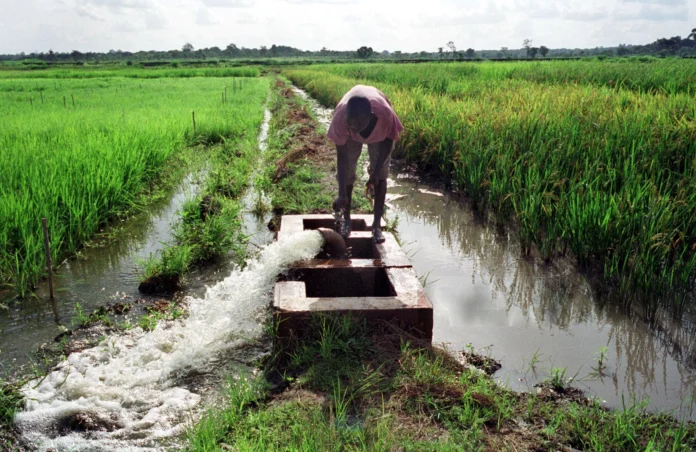Arabfields, Newsroom, Oran — In a world facing climatic challenges and soil erosion in agricultural lands, local initiatives to revive fruit crops are emerging as beacons of hope. In Kyrgyzstan, villagers are breathing new life into lands abandoned since the Soviet era by replanting vines and apricot trees, while in India, a women-led agricultural school is combating child malnutrition through climate-resilient crops like moringa and pumpkin. These community-driven projects illustrate how sustainable agriculture can blend tradition, economy, and food resilience.
At the heart of Kyrgyzstan’s mountains, in the Batken region, a nascent cooperative is reviving the fruit heritage of a country marked by the remnants of the Soviet Union. For decades, vast expanses of fertile land were left abandoned after the regime’s fall, where cotton production was prioritized at the expense of ancestral orchards. Today, a village mobilization is transforming these wastelands into productive oases. The cooperative, which already covers two hectares, focuses on growing vines and apricot trees, two emblematic species of the region. Batken apricots, renowned for their sweet flavor and nutrient richness, were once an economic pillar before being marginalized by imposed monocultures. The vines, meanwhile, hark back to a millennia-old winemaking tradition, adapted to steep altitudes and rocky soils.
This revival mobilizes inhabitants of isolated villages, where rural unemployment and migration to cities are undermining the social fabric. “These dormant lands represent immense potential for our community,” explains a cooperative spokesperson, highlighting how mixed plantings, vines intertwined with apricot trees, promote biodiversity and protect against climatic hazards. Expansion plans aim to double the area in the coming years, with technical support for organic practices, avoiding chemical pesticides inherited from the Soviet era. Already, the initial yields promise stable incomes: dried apricots, certified organic, are exported to Europe, while local grapes are relaunching artisanal wine production. This cooperative model, inspired by successful agroforestry experiences in the region, not only revitalizes the local economy but also preserves the genetic diversity of indigenous varieties, threatened by global agricultural standardization. In a country where 70% of the population depends on agriculture, this initiative could serve as a blueprint for reclaiming thousands of abandoned hectares.
Thousands of kilometers away, in India, a women-led agricultural school is pioneering the fight against child malnutrition, a scourge that still affects millions of children in rural areas. Established in regions vulnerable to climatic hazards, such as the eastern part of the country, this institution trains female farmers to cultivate resilient plants: moringa, nicknamed the “miracle tree” for its wealth of proteins, vitamins, and minerals, and pumpkin, robust against drought and abundant in beta-carotene. These crops, adapted to depleted soils and unpredictable monsoons, diversify traditional diets dominated by monotonous cereals, often insufficient in micronutrients.
Led by a collective of women from tribal communities, the school integrates technical training and nutritional awareness. Participants learn not only to plant and harvest but also to incorporate these fruits and vegetables into family meals, turning moringa leaves into fortifying powders or pumpkins into enriched purees. The results are compelling: yields have increased significantly, shifting from sporadic production to regular harvests that feed families and generate surpluses for local markets. This approach directly combats malnutrition, responsible for stunted growth in one in three rural Indian children. By promoting “nutrition gardens” around schools and villages, the initiative empowers women, often confined to domestic tasks, positioning them as agricultural entrepreneurs. Supported by partnerships with NGOs and government programs, it is now expanding to several districts, where thousands of children benefit from diversified school menus, reducing cases of anemia and immune deficiencies.
These two experiences, in Kyrgyzstan and India, underscore a global movement toward regenerative agriculture. By rehabilitating forgotten lands and betting on adapted crops, they weave connections between environment, health, and local economy. In the face of the global food crisis, exacerbated by conflicts and climate change, such initiatives prove that solutions often lie in ancestral knowledge and community mobilization. For Kyrgyz villagers and Indian farmers, fruits are not just a harvest: they are the ferment of sustainable renewal.












